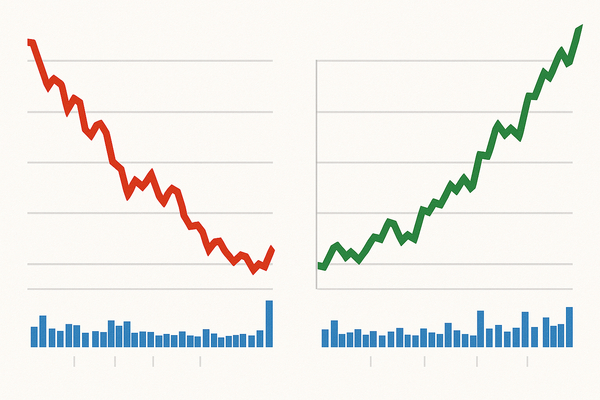
Arcosa (NYSE:ACA) and peers are being re-priced after a month of divergent stock moves. Arcosa’s shares fell 7.4% over the past month, while General Electric (NYSE:GE) has surged roughly 77.6% year-to-date. Short-term this matters because investors are revisiting earnings quality and order books. Long-term it matters because durable infrastructure spending, defense procurement, and data-center electrification continue to drive revenue for several industrial names. The story spans the U.S., Europe and large Asian markets where turbine orders, coatings demand and construction projects are reshaping capital allocation. Historical context: several names are trading off recent multi-year gains even as fundamentals show mixed signals.
Headlines: pullbacks, margin surprises and corporate activity driving re-rates
Arcosa (NYSE:ACA) cooled after a 1-month return of -7.4%, though its three-year total shareholder return still sits at 56.6%. Armstrong World Industries (NYSE:AWI) reported third-quarter revenue up 16.3% year-over-year and margin expansion tied to an acquisition of Geometrik Manufacturing Inc. AZZ (NYSE:AZZ) saw its share price fall sharply — down 14.6% over the past month — following an earnings miss in its Precoat Metals segment, even as its Metal Coatings business produced double-digit sales growth and margins jumped to 19.7% from 2.3% a year ago.
APi Group (NYSE:APG) has alerted shareholders to an unsolicited mini-tender offer from TRC Capital at $33.40 for up to 3 million shares, a near-term governance and liquidity item to watch. Fastenal (NASDAQ:FAST) announced a $0.22 cash dividend, payable November 25, with a record date of October 28. GE Vernova (NYSE:GEV) and peers are benefiting from higher orders and pricing for large gas turbines as AI and cloud build-outs drive demand for reliable power.
Sector pulse: demand pockets, margin compression and policy drivers
Three recurring themes are shaping corporate results. First, infrastructure projects and data-center expansion are accelerating demand for metal coatings, power equipment and construction services. AZZ’s Metal Coatings growth and GE Vernova turbine orders are direct evidence. Second, consolidation and M&A are reshaping supply — Armstrong’s acquisition and Arcosa’s steady net income growth point to active capital deployment across mid-caps. Third, input-cost and supply-chain pressure remain uneven. Spirit AeroSystems’ supplier strain (covered in related reporting) shows aerospace supply chains are still negotiating inflation and production cadence.
Policy matters too. Tariff rhetoric and export controls have created short-term volatility in transport and manufacturing names exposed to China and critical minerals. That has weighed on truck and freight-related firms and on some components suppliers, shifting near-term demand expectations even where long-term contract backlogs remain intact.
Winners & laggards: who’s showing durable strength and where risks cluster
Winners
- General Electric (NYSE:GE) — GE’s 77.6% YTD gain reflects stronger order momentum in power and aviation spinoff activity at GE Vernova. Investors point to backlog improvement and pricing power for large turbines used by hyperscale data centers and utilities.
- Armstrong World Industries (NYSE:AWI) — Q3 revenue rose 16.3% YoY with margin expansion and a strategic acquisition that expands wood manufacturing capabilities. The company’s recent 12-month total shareholder return of ~43% confirms momentum in building products.
- AZZ (NYSE:AZZ) — despite a recent share-price drop and an earnings miss in one segment, AZZ reported profit margins of 19.7% versus 2.3% last year. That leap demonstrates operating leverage in its higher-margin Metal Coatings business tied to infrastructure projects.
Laggards and near-term risks
- Arcosa (NYSE:ACA) — the stock’s 1-month decline of 7.4% forces a reappraisal. Net income growth remains a bright spot, but short-term momentum cooled. Investors should weigh the one-month pullback against a three-year TSR of 56.6% and recent macro exposure to construction cycles.
- Companies facing order volatility — names with exposure to aerospace suppliers or to China-related tariffs have seen intraday swings. Core & Main (NYSE:CNM) showed a -3.45% intra-session drop recently, highlighting sensitivity to regional construction demand and trading flows.
- AZZ forward estimates — while historical EPS surged (annualized five-year EPS growth of 37.9% and a dramatic one-year gain), consensus now shows forward earnings declining roughly 15.8% annually with revenue growth near 4.8%. That disconnect explains the recent re-rating.
Across the board, winners tend to be companies with visible backlog, pricing power and exposure to durable drivers such as infrastructure bills, defense procurement and data-center electrification. Laggards show either concentrated exposure to cyclical end markets or short-term execution gaps.
What smart money is watching next
- Earnings calendar and conference calls: Illinois Tool Works (NYSE:ITW) is set to issue Q3 results on October 24; IDEX Corporation (NYSE:IEX) will report October 29 and Ingersoll Rand (NYSE:IR) on October 30. Traders will parse guidance language for signs of order momentum or weakness in service revenues.
- Order and backlog updates at power and coatings firms: GE Vernova (NYSE:GEV) order flows and AZZ’s segment commentary will be monitored for continued demand from data centers and infrastructure projects. Any shift in large-turbine pricing or shipment timing would be market-moving.
- Corporate action and governance items: APi Group (NYSE:APG) shareholders should track responses to the $33.40 mini-tender offer and any board statements. Mini-tender activity can create short-term liquidity and pricing distortions.
Closing take-away
The single lesson for investors: recent price moves are exposing differentiation within the same pocket of the market. Some names show durable margin improvement and backlog — GE (NYSE:GE), Armstrong (NYSE:AWI) and AZZ (NYSE:AZZ) illustrate this — while others, including Arcosa (NYSE:ACA), reflect short-term repricing despite multi-year gains. Watch earnings calls and order-book disclosures over the next two weeks. Those items will decide whether recent pullbacks become buying windows or signal more selective risk repricing across the group.












